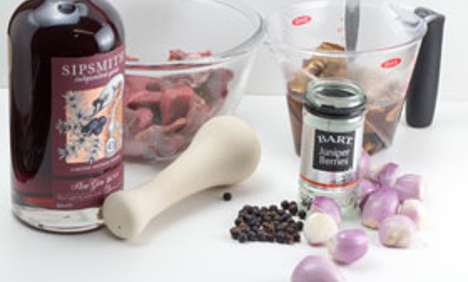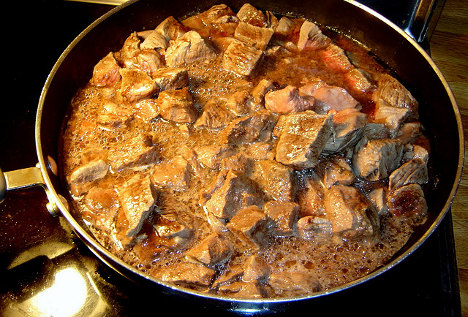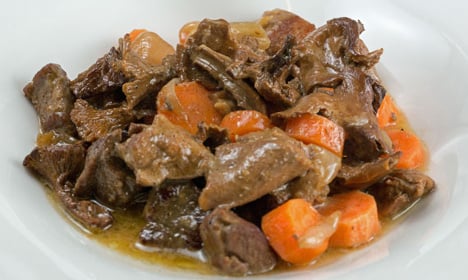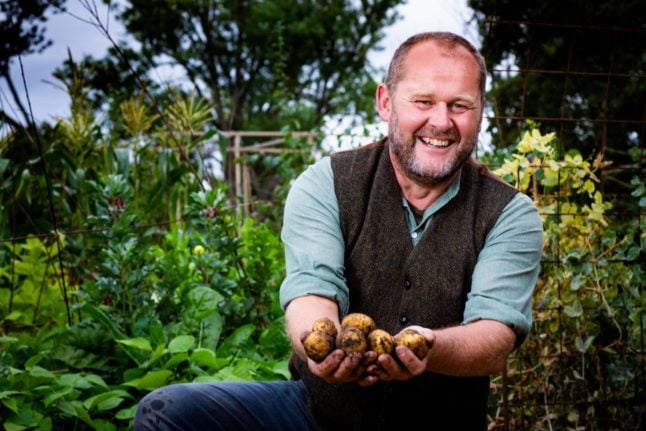Summary
Serves: 4
Time needed: 80 minutes
Ingredients
20g dried wild mushrooms
2 tbsp butter
600g diced game
8 small shallots, peeled and halved
Salt and freshly ground black pepper
4 juniper berries, crushed
2 tbsp gin
120ml (½ cup) whipped cream or double (heavy) cream
250g carrots, peeled and sliced

All the ingredients you'll need for your stew. Photo: John Duxbury
Method
1. Place the dried mushrooms in a jug and pour about 240 ml (1 cup) cold water over them and leave them to soak for 30 minutes or so. (Alternatively, soak in hot water for 20 minutes). Pick the mushrooms out of the water and put in a sieve over a bowl. Carefully strain the 'mushroomy' water, through muslin if necessary, and set aside.
2. Melt the butter in a large casserole over a medium heat. Add half the meat and cook until nicely browned. Remove from the pan and set aside. Repeat with the rest of the meat.
3. Add the onions and fry until just beginning to brown. Season to taste and add the crushed juniper berries.
4. Return the meat to the pan and add the mushrooms and their liquid. Add the gin and cream. Cover and simmer on a gentle heat until the meat is tender. The exact time will depend of the type and cut of meat, but this should take between 30 and 60 minutes.
5. Add the carrots to the stew for the last five minutes of cooking.

Photo: Andy Melton/Flickr
Serving Suggestions
Serve with potatismos (mashed potato) and a glass of red wine
Tips
– If you are confident that the dried mushrooms are clean then, you can skip step 1 and add the dried mushrooms and 250 ml (1 cup) of water in step 4.
– Although Swedes would normally make this recipe using dried mushrooms, you can use fresh mushrooms if you prefer. Use 100 g (4 oz) and add them in step 4 along with 250 ml (1 cup) of water.
– Try sloe gin instead of plain gin or slånbärssnaps (sloe snaps) – both work really well.
Recipe courtesy of John Duxbury, Editor and Founder of Swedish Food




 Please whitelist us to continue reading.
Please whitelist us to continue reading.
Member comments